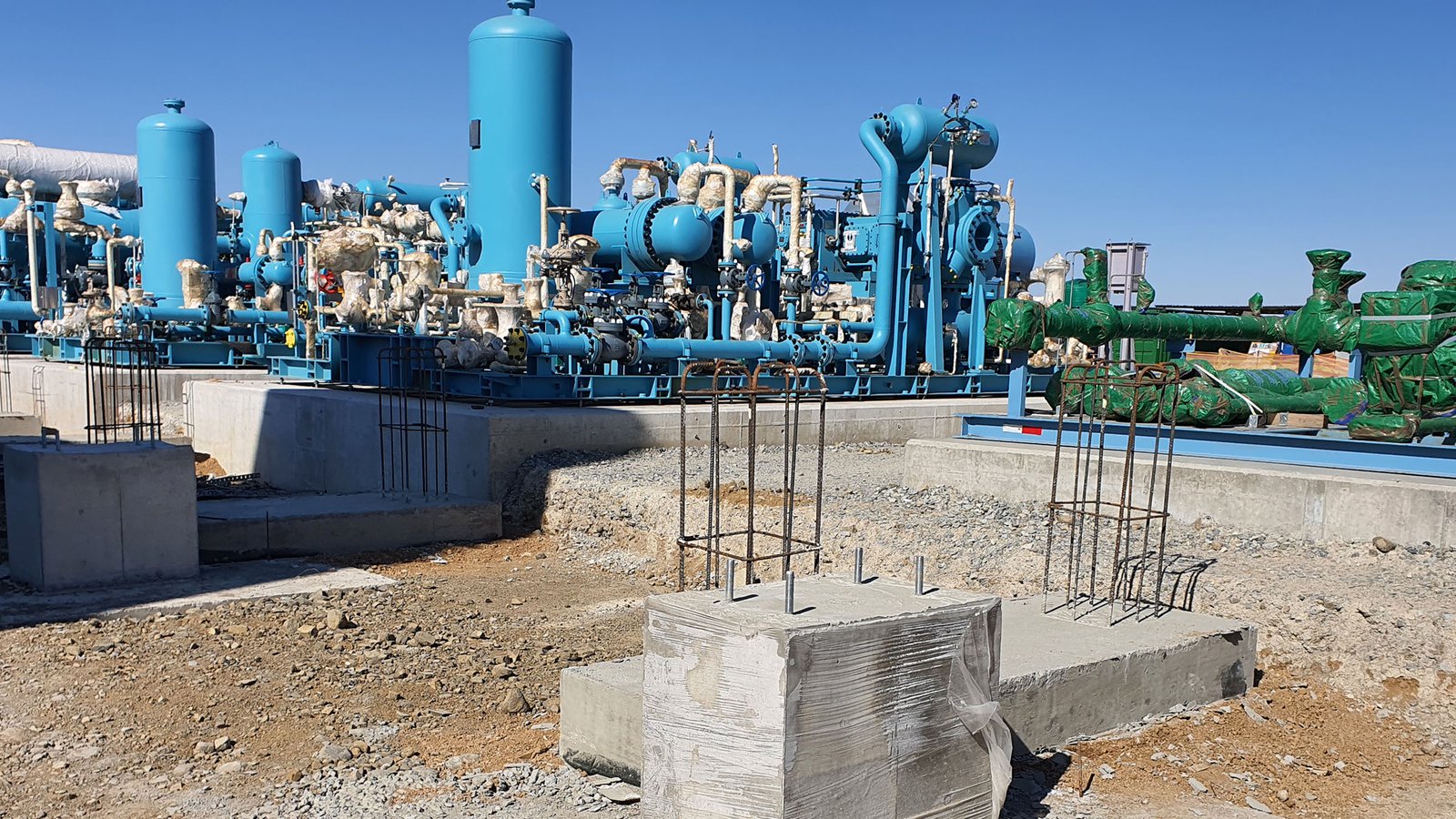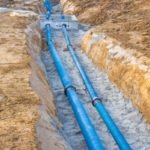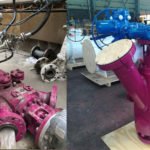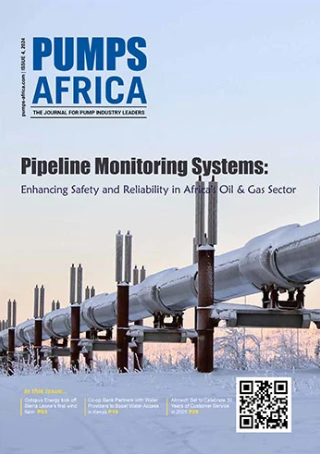Phase 1 of the Virginia Gas Project in the Free State is at a hot commissioning phase, set to get online soon, all else being equal. Tetra4, Renergen Limited’s subsidiary, the project’s developer, is the holder of the Virginia Gas Project, South Africa’s first and only onshore natural gas and helium production right.
Thus far, the progress achieved in the project could not have happened at a more perfect time, considering the situation in the energy sector both domestically and globally. Cognisant of this, Stefano Marani, the Chief Executive Officer of Renergen, enthuses that Tetra4 is going all-out to ensure that it meets contemporary industry needs through strategic partnerships and building robust supply chain networks.
Domestic and global demand
Specifically, through the production and supply of Liquefied Natural Gas (LNG) and helium, Tetra is committed to playing its part in addressing both domestic and global demand.
- Domestically
South Africa’s Integrated Resource Plan (IRP) highlights the need for the country to diversify its energy generation mix to include renewables. This is aimed at reducing dependency on fossil fuels, as well as ensuring certainty and reliability of supply. Currently, coal accounts for 85% of energy generation, a situation which has decidedly made South Africa a heavy carbon-intensive energy economy. That is why the country has to find alternative energy sources urgently, as power outages are costing the economy billions due to productivity losses.
Two factors are also worth mentioning. Firstly, meeting Environment Social and Governance (ESG) obligations is integral to contemporary operations of carbon-intensive energy industries. Secondly, due to the war in Ukraine, energy costs are skyrocketing, and it has become worthwhile for industry to seek alternative energy sources that are comparatively cost-effective. For instance, in mining, energy constitutes not less than thirty per cent of operating costs and the current situation squeezes profit margins.
Marani states that Renergen, through the LNG project, views this energy supply challenge, which industry is facing, as a great opportunity. “We are excited about the significance of the project in the present atmosphere. We are bringing a new and sustainable source of low carbon energy which will help South Africa diversify its current carbon-intensive economy through mainly clean and consistent energy. Furthermore, industry can operate uninterrupted.“
- Globally
Globally, there is a massive supply shortage of helium, which is critical to microchips. This explains why microchips are in short supply, as they are used in the manufacturing of microchips. From this standpoint, Marani says Renergen is excited that the project is coming online at just the right time. “We are looking forward to meeting the shortfall as far as we can.“
Strategic partnerships and supply chains
In view of its obligation, Renergen is positioning itself as a company that goes beyond mere supplying LNG to forging strategic partnerships that ensure that its product adds more value to industry. This is evident through the dual-fuel concept with leading truck manufacturers and long-term supply contracts with logistics companies.
- Dual-fuel concept
The dual-fuel injection system concept, which combines diesel and LNG, is a tried and proven technology which is being adopted quickly around the world. The manufacturers are seeking practical ways of reducing fuel costs and emissions with electric trucks still being many years away.
Marani elaborates on how the trucking industry will benefit from this innovation. “Dual fuel is that, when you combine the gas and the diesel injection, the overall fuel consumption goes down by between 8 and 10%. Essentially, you are improving the efficiency of the engine by blending the gas and the diesel.“
Generally, when a truck runs on natural gas, it reduces the carbon footprint by a minimum of 34%, and diesel particulate matter by up to 90%. Low diesel particulate matter is healthier for the environment, which reduces the risk of lung disease. Also, the engine oil lasts longer, which translates into longer engine life. Most importantly, the overall running cost is reduced in the range of 15 to 25%, improving profit margins.
Noteworthy, LNG-powered vehicles tend to have a better resale value in the second-hand market as the engine has suffered less wear and tear.
In general, Renergen is excited that some manufacturers, appreciating these benefits, are embracing LNG for their engines. Thus far, DAF and Volvo have come on board.
Marani views partnerships with renowned brands in the niche of truck manufacturing as a trailblazer. “DAF are the biggest truck manufacturer in Europe. They are very strong on natural gas, while Volvo and Iveco already manufacture dedicated 100 per cent LNG trucks in Europe, which are selling well. They have been in the game for close to three to four decades,“ he explains, adding that, recently, SCANIA became part of the portfolio, and trialling of SCANIA’s MAN truck is at an advanced stage.
- Attractive alternative for manufacturers
Some manufacturers with energy-intensive operations regard Renergen’s LNG as an attractive alternative source. For instance, in early 2021, the company entered a groundbreaking deal with two manufacturers, Consol Glass and Italtile. Under the terms of the deal, Tetra4 will supply the two companies with LNG to help them diversify away from their heavier carbon fuel.
READ: Menengai III geothermal power plant to be commissioned in December
Upbeat about future prospects
Overall, Tetra4 is upbeat about future business prospects. It is perfectly positioned to meet the demand for LNG in the automotive and manufacturing industries, in addition to helium specifically for microchips.
On the automotive front, there are two developments, which will be key drivers, at the fore – the electric vehicle niche market and demand in China.
Despite all the hype, growth in traction of electric vehicles (EV) could be at least a decade away. This is because the energy density of batteries is low, storing at best 3% of the total energy per kilogram of battery compared to diesel. Meanwhile, predictably, LNG powered will emerge as a viable option.
Secondly, China market has experienced explosive growth to emerge as the world’s biggest market for LNG trucks. From this viewpoint, the future augurs well for producers like Renergen.
Marani also looks forward to increasing demand for organisations in the manufacturing industry and is confident that it is going to meet the challenges.
Last but not least, the global helium scarcity is a situation which makes Renergen all the more upbeat about prospects for its business. With machines now becoming part of the mainstream industry, there is a huge demand for microchips, of which helium is integral to its production process.
On successful completion of the hot commissioning stage of Phase 1 of the Virginia Gas Project, it will be all systems go for the production of LNG and helium. Hot commissioning entails all the necessary work being done to make sure the plant is safe to be turned on. Once that commissioning is done, then the plant goes into operation.
An isolated gas field turns into a major onshore gas asset
When Renergen’s team of prospectors came across an isolated gas field in South Africa’s Free State their ambitions were modest. “Back then the aim was to produce only a little bit of power for the neighbouring gold mine. But as it started to unravel and drill, the team discovered more gas deposits,” Marani reminisces.
After the project-altering discovery, it changed from being a tiny gas asset to becoming a major onshore gas boon for South Africa’s energy industry. So, it kind of evolved, and now it is a ten-year overnight success.
Drilling process – smaller environmental footprint
Tetra4 employs a process of drilling with a small environmental footprint. The well is probably less than 10 metres by 10 metres, and it requires no additional input once it’s been drilled. The pipeline is buried 2200 meters underground, which means that a farmer can still plough over the pipeline and not worry about intersecting. “We drill once and then we move off and that’s it. The surface rights belong to the surface owner and they can keep on using LAN for whatever it is that they wanted to use it for,” Marani expounds.
Notably, there is no fracking involved as there is no gas contained in the shale as the gas is naturally free-flowing. It is just a matter of drilling a shallow well. Once the well has been drilled, it is connected to a network. The gas is reticulated to the plant, which produces clean energy.
These endeavours have been recognised by compliance experts. A recent rating by a company called Risk Insights, which ranks a company’s performance on Environment Social and Governance (ESG), Renergen, is in the top quartile.“ The top quartile for a first attempt is a pretty good place to be. Now we are aiming to be in the top 20%,” Marani says the company is elated.
*Fracking is the process of fracturing rock using water to increase the flow rate of the gas.
LNG – a safer option
LNG vapourises quickly into gas. Methane is incredibly light, relative to the atmosphere. So, the minute that there is a methane leak, it just floats into the atmosphere, which means that there is no collection.
This is unlike diesel. If a diesel tank falls onto the floor and bursts, there is a huge potential for an explosion.
Additionally, LPG is capable of igniting and therefore exploding. Under almost any circumstances, methane has a very tight tolerance in terms of how it will burn. It needs to have a precise ratio of oxygen to methane to ignite. So from a safety perspective, methane is by far one of the safest fuels out there.
Article submitted by Jimmy Swira, a Johannesburg-based writer who plies his trade in the B2B space, with a strong bias towards Construction, MOG (Mining, Oil and Gas), Transport, Supply Chain Management, etc. He is an all-rounder who can also dabble in fiction, sports and political economy.







